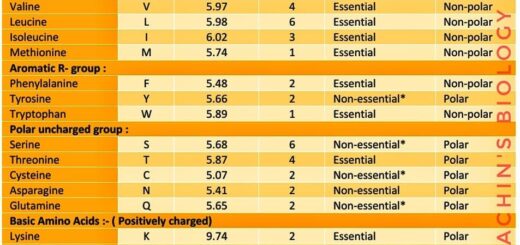Fundamentals of Research: Definition and Objectives, types of research

Research is the lifeblood of academia, industry, and societal advancement. It is a systematic and rigorous process that underpins our understanding of the world and drives innovation. In this article, we delve into the fundamentals of research, exploring its definition and multifaceted objectives. We will examine the various types of research, including basic research, which aims to expand knowledge without immediate practical applications, and applied research, which is directed towards solving specific, practical problems.
Fundamentals of Research:
1. Definition of Research
Research can be defined as a structured and methodical inquiry into a subject or phenomenon, aimed at discovering, interpreting, and revising facts and theories. It involves a systematic collection, analysis, and interpretation of data to answer questions, solve problems, or generate new knowledge. Research is driven by curiosity, a desire to understand, and a quest for solutions.
2. Objectives of Research
The objectives of research are diverse and encompass a wide range of goals, depending on the specific field and context:
2.1. To Discover New Facts or Verify Existing Ones
One of the fundamental objectives of research is to unveil new information or validate existing knowledge. This involves collecting and analyzing data to test hypotheses, confirm theories, and challenge prevailing assumptions. Research constantly pushes the boundaries of what is known, leading to new discoveries and insights.
2.2. To Develop New Theories or Models
Research is instrumental in formulating new theories or models that explain complex phenomena. These theoretical frameworks provide a structured way of understanding the world and predicting future events. By proposing and testing new theories, research contributes to the evolution of knowledge and scientific progress.
2.3. To Solve Existing Problems
Research is often undertaken to address specific problems or challenges faced by individuals, communities, or organizations. This problem-solving orientation is prevalent in applied research, where the goal is to find practical solutions to real-world issues. Research findings can inform decision-making, policy development, and the design of interventions.
2.4. To Explore and Analyze General Issues
Research is not always confined to specific problems. It also explores broader issues and themes, seeking to understand the underlying causes, patterns, and consequences of phenomena. This type of research often involves qualitative or mixed methods approaches, delving into the complexities and nuances of human experiences and social interactions.
Importance of Research
The importance of research cannot be overstated. It is the engine that drives innovation, improves our quality of life, and informs evidence-based decision-making. Research provides the foundation for technological advancements, medical breakthroughs, environmental conservation, social change, and economic development. It empowers us to make informed choices, challenge the status quo, and shape a better future.
Types of Research
The landscape of research is diverse, with various methodologies and approaches tailored to different objectives and questions. Understanding these types is crucial for researchers to select the most appropriate strategy for their investigations.
| Feature | Pure (Fundamental) Research | Applied Research |
| Primary Goal | Expands knowledge and understanding of fundamental principles. | Solves practical problems or addresses specific needs. |
| Motivation | Curiosity-driven, seeks to answer “why” and “how” questions. | Problem-solving driven, seeks to answer “what works” questions. |
| Scope | Broader, often theoretical and exploratory in nature. | Narrower, focused on specific applications and outcomes. |
| Timeframe | May have a longer timeframe, as discoveries may not have immediate applications. | Often has shorter timeframes, driven by the need for timely solutions. |
| Methodology | Diverse, can include experiments, observations, surveys, and theoretical modeling. | More focused on practical experiments, field trials, and interventions. |
| Outcomes | Primarily contributes to theoretical knowledge and understanding. | Produces practical solutions, products, or technologies. |
| Example (Botany) | Investigating the genetic basis of flower color variation in wild orchids. | Developing a new biopesticide to control a specific fungal disease in wheat crops. |
| Funding | Often funded by government agencies or academic institutions. | Often funded by industries, businesses, or organizations seeking specific solutions. |
| Publication Focus | Published in academic journals emphasizing theoretical contributions. | Published in industry reports, patents, or journals focused on practical applications. |
| Impact | Contributes to the long-term advancement of scientific knowledge and understanding. | Has a more immediate impact on real-world problems and societal needs. |
| Relation to Each Other | Provides the foundation for applied research, as new discoveries often lead to practical applications. | Builds upon the knowledge generated by pure research to develop solutions. |
| Additional Example | Studying the evolutionary history of a rare plant species to understand its ecological niche. | Developing a sustainable method for propagating endangered medicinal plants to ensure their conservation and availability. |
1. Basic (Pure) Research
Basic research, also known as fundamental or pure research, is driven by curiosity and a quest for knowledge. It aims to expand our understanding of fundamental principles and theories without immediate practical applications. Basic research often lays the groundwork for future applied research and technological advancements.
Basic research in botany is driven by a curiosity to understand the fundamental principles governing plant life. It seeks to expand our knowledge without immediate practical applications.
Example: A study investigating the genetic mechanisms controlling flower color variation in orchids is a classic example of basic research. This research aims to expand our understanding of plant genetics and evolution, without any direct practical application in mind.
2. Applied Research
Applied research is focused on solving specific practical problems or addressing real-world challenges. It utilizes existing knowledge and theories to develop solutions, improve processes, or create new products and services. Applied research is often conducted in collaboration with industry or government agencies.
Applied research in botany focuses on solving specific practical problems related to plants. It utilizes existing knowledge to develop solutions for agriculture, horticulture, and conservation.
Example: Research aimed at developing drought-resistant crop varieties to address food security challenges in arid regions is an example of applied research. This research applies existing knowledge of plant physiology and genetics to solve a real-world problem.
3. Quantitative Research
Quantitative research involves the systematic collection and analysis of numerical data. It seeks to identify patterns, relationships, or trends through statistical analysis. Quantitative research is often used to test hypotheses, measure variables, and make predictions. Surveys, experiments, and structured observations are common methods in quantitative research.
Quantitative research in botany involves collecting and analyzing numerical data to identify patterns and trends in plant populations, growth, or responses to environmental factors.
Example: A study measuring the effect of different fertilizer concentrations on the growth rate of tomato plants is a quantitative research example. The researcher collects numerical data on plant height, leaf area, and fruit yield to analyze the impact of fertilizers.
4. Qualitative Research
Qualitative research aims to understand concepts, thoughts, or experiences through non-numerical data, such as interviews, open-ended surveys, and observations. It focuses on capturing the richness and complexity of human behavior and social interactions. Qualitative research is often used to explore new phenomena, generate hypotheses, or gain in-depth insights into a specific context.
Qualitative research in botany aims to understand the complex relationships between plants and their environment or the cultural significance of plants in different societies.
Example: Interviews with indigenous communities about their traditional uses of medicinal plants would be a qualitative research approach. This research explores the cultural knowledge and practices associated with plants, providing insights that cannot be captured through numerical data alone.
5. Descriptive Research
Descriptive research aims to describe the characteristics of a population or phenomenon. It answers questions about “what” is happening rather than “why” or “how.” Descriptive research often involves surveys, observations, or case studies to gather information about a particular subject.
Descriptive research in botany aims to characterize plant species, their distribution, or their interactions with other organisms.
Example: A survey of plant species diversity in a particular forest ecosystem is a descriptive research study. The researcher documents the types of plants present, their abundance, and their spatial distribution.
6. Analytical Research
Analytical research involves the critical evaluation and interpretation of existing data to draw conclusions or make inferences. It often involves comparing different datasets or analyzing trends over time. Analytical research is commonly used in fields like history, literature, and social sciences.
7. Exploratory Research
Exploratory research is conducted when there is limited existing knowledge or understanding of a topic. It aims to gain a preliminary understanding of a phenomenon, identify key variables, or generate hypotheses for future research. Exploratory research often involves interviews, focus groups, or pilot studies.
Analytical research in botany involves analyzing existing data to draw conclusions about plant evolution, ecology, or physiology.
Example: A study comparing the genetic sequences of different orchid species to understand their evolutionary relationships is an example of analytical research. This research analyzes existing genetic data to make inferences about the history of orchid diversification.
8. Conclusive Research
Conclusive research aims to provide definitive answers to research questions or test hypotheses with a high degree of confidence. It is often used to make decisions, evaluate interventions, or inform policy development. Conclusive research typically involves rigorous experimental designs or large-scale surveys.
Conclusive research in botany aims to provide definitive answers to research questions about plant biology or to test hypotheses with high confidence.
Example: A controlled experiment testing the effectiveness of a new biopesticide against a specific plant pest is a conclusive research study. This research aims to provide a clear answer to the question of whether the biopesticide is effective and safe for use.
By understanding the different types of research and their applications in botany, researchers can design studies that effectively address their research questions and contribute to the growing body of knowledge in this field.
![[DOWNLOAD] Molecular and Cell Biology for Dummies PDF Book 2 [DOWNLOAD] Molecular and Cell Biology for Dummies PDF Book](https://biologywala.com/wp-content/uploads/2021/10/DOWNLOAD-Molecular-and-Cell-Biology-for-Dummies-PDF-Book-1-500x245.jpg)

